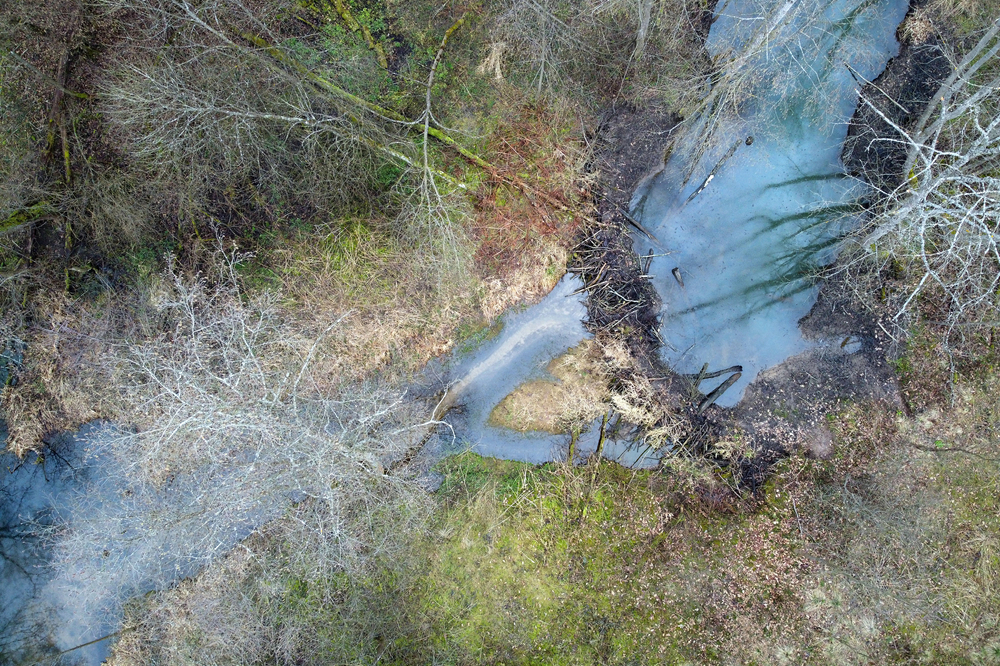Scientists are getting a helping hand from artificial intelligence to track one of nature’s most industrious animals, the beaver. Keeping tabs on beavers is important because they can dramatically change waterways by constructing dams and lodges.
Now, a team of researchers has constructed a machine learning model called the Earth Engine Automated Geospatial Elements Recognition, or EEAGER (yes, as in eager beaver). The model allows researchers and policymakers to track beavers more efficiently and manage landscapes.
Arctic beavers are melting the permafrost
The model is trained to identify beaver dams from aerial and satellite imagery. It’s a much easier method than traditional approaches that researchers have used to count dams.
Before its creation, scientists used a handful of techniques to map beaver dams. The most demanding one involves walking or paddling creeks and streams to physically map out the position of dams.
“It’s really hard to navigate these landscapes on the ground,” says Emily Fairfax, an assistant professor at the University of Minnesota in the department of geography, environment, and society, and lead author of the research. She recalls how hard it can be to reach beaver dams in person, which often involves dragging a canoe over boggy terrain.
“Instead of having to be in the thick of it—waist deep in mud—I can look down from satellites and see the influence of beavers at spatial scales way bigger than I could ever do on the ground.”
 Photo by Mike_O/Shutterstock
Photo by Mike_O/Shutterstock
Mapping dams by hand using remote sensing images, while effective, is still time-consuming. “I’d pull down these satellite images and then comb through them like I’m doing a Where’s Waldo for hours and hours, trying to find the tell-tale shapes of a beaver dam,” says Fairfax.
EEAGER makes finding beaver dams easier and faster. The technology could help researchers answer fundamental questions about beavers such as how many call North America home.
“We have no idea how many there are, honestly,” says Fairfax. Prior to the fur trade, North America is estimated to have been home to between 100 to 400 million beavers. That’s about one beaver for every kilometre of habitable stream, she explained. Those numbers crashed following the fur trade, and while beaver populations have since rebounded, researchers don’t know how many beavers are out there or how they’re distributed across the landscape.
Even in Canada, where the beaver is an iconic animal, populations are lacking in certain provinces. “In Ontario there are lots of beavers,” says Fairfax. “Alberta needs more beavers. B.C. needs more beavers.” EEAGER could be used to help answer why beavers have rebounded so strongly in provinces like Ontario, and why there is a deficit in British Columbia.
Fairfax also studies how beaver ecosystem engineering helps buffer the environmental stressors of climate change. But that requires looking at beavers on a large scale. “I need to look at a lot of beavers working in tandem to see how they’re going to affect something as large and as potentially powerful as a wildfire.”
With EEAGER helping crunch large amounts of data, researchers like Fairfax can focus on how beavers and their engineering skills could be a tool in the arsenal in the fight against climate change. Beaver-created wetland habitats are uniquely resistant to droughts and wildfire because water is stored both in the beaver ponds themselves and in the surrounding soil, like a ‘big wet earth sponge,” explains Fairfax. She suggests looking at beavers as allies on the firefighting front.
“We don’t have to do it all ourselves,” says Fairfax. “We can let the beavers build their wetlands and they can be out there doing work for us as well.”
Related Story Why now is the time to embrace the beaver
Related Story Ph.D. student’s creative video shows how beavers help prevent wildfires
Related Story Beavers in Britain? They’re back, after more than a century